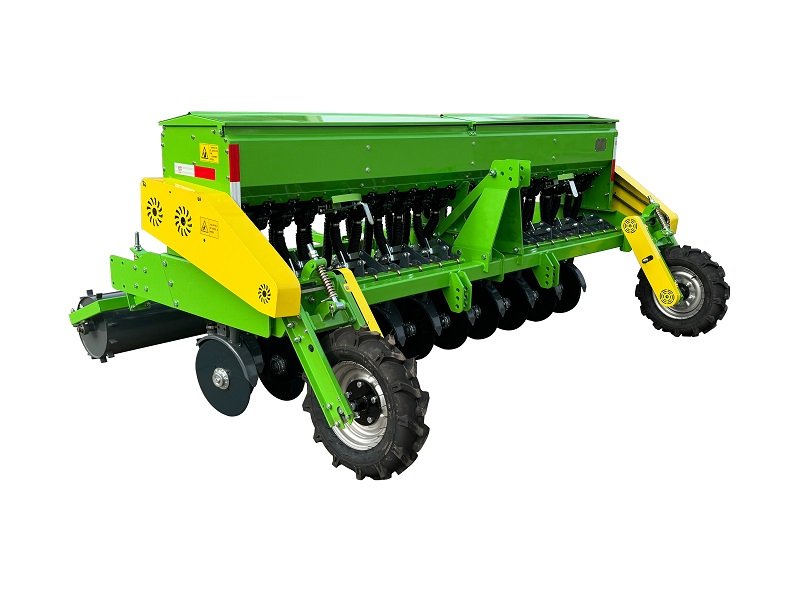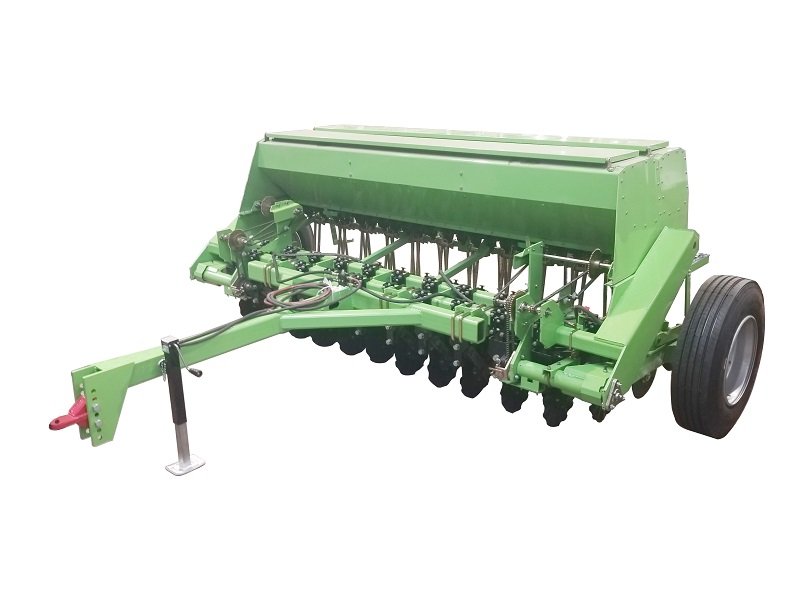The choice between a conventional seed drill and a no-till seed drill depends on your farming goals, soil conditions, and environmental considerations. Here’s a comparison to help you decide:


Conventional Seed Drill:
- Soil Preparation: Requires the soil to be tilled or plowed before planting. This helps to create a fine seedbed and improve soil aeration.
- Soil Structure: Conventional drills can disturb the soil structure, which may lead to issues like erosion and compaction over time if not managed properly.
- Cost: Often cheaper than no-till drills since they are simpler in design and function.
- Efficiency: Best suited for well-prepared, loose soils where the aim is to create a smooth seedbed. This might be ideal in regions where soil quality is good and erosion is not a major concern.
- Common Use: More traditional and still widely used in conventional farming, especially when crops are grown in rotation with tillage-based practices.
Advantages of No-Till Seed Drills:
- Soil Conservation: Helps maintain soil structure and reduces erosion by leaving crop residue on the surface.
- Water Conservation: Reduces water runoff and improves water infiltration, making it ideal for areas with rainfall variability.
- Lower Fuel and Labor Costs: No tilling means less fuel and labor, lowering operational costs.
- Improved Soil Health: Helps build organic matter and increase microbial activity in the soil, improving fertility over time.
- Erosion Control: Especially beneficial in areas prone to wind and water erosion.
No-Till Seed Drill:
- Soil Preparation: Does not require tilling, leaving the soil undisturbed. The seed is placed directly into the residue or stubble of the previous crop.
- Soil Structure: Helps maintain soil structure, improves water retention, and reduces erosion. It allows for better infiltration of water and prevents soil compaction over time.
- Cost: No-till drills are typically more expensive than conventional seed drills due to their specialized design.
- Efficiency: Ideal for farmers looking to practice conservation tillage, reduce fuel use, and improve soil health over time. It’s highly suitable for regions with heavy rainfall or those prone to soil erosion.
- Common Use: Used in sustainable agriculture, conservation farming, and no-till farming systems, which focus on maintaining soil health and minimizing soil disturbance.
Advantages of Conventional Seed Drills:
- Better for Heavy Clay Soils: Tilling the soil can be beneficial for breaking up compacted soils or working in heavy, wet conditions.
- More Flexibility in Crop Rotation: Suitable for conventional crop rotations where tillage is required or when planting certain crops that need a fine seedbed.
- Faster Operation in Some Conditions: Conventional drills can sometimes plant faster since they don’t have to deal with the residue left by previous crops.
Which One to Choose?
- For Conservation Farming: If your goal is to improve soil health, conserve moisture, reduce erosion, and practice sustainable farming, no-till seed drills are the better option.
- For Traditional or Intensive Farming: If you’re working with heavy or clay soils, or you need to prepare a fine seedbed for certain crops, conventional seed drills might be more suitable.
Summary:
- No-Till Seed Drills are best for long-term soil health, water conservation, and sustainable agriculture practices.
- Conventional Seed Drills are ideal for larger, well-prepared fields where traditional tillage is needed for effective planting.
If you’re considering transitioning to no-till practices, the upfront cost of a no-till drill could be higher, but the long-term benefits to the soil and the environment can make it a worthwhile investment.